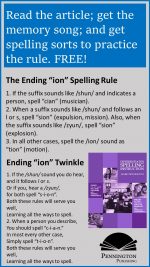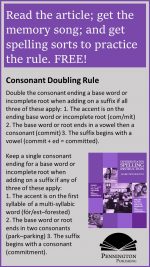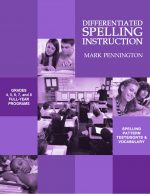
i before e
People love to break rules; sadly and happily it’s in our nature. Even more so, people love to discover and point out when rules aren’t rules at all. The latter is often the case with regard to the i before e spelling rule. People love to challenge that rule. The editor of Reddit posted the following take-down of the most well-known English spelling rule:
I before E…
…except in a zeitgeist of feisty counterfeit heifer protein freight heists reining in weird deified beige beings and their veiny and eidetic atheist foreign schlockmeister neighbors, either aweigh with feigned absenteeism, seized by heightened heirloom forfeitures (albeit deigned under a kaleidoscope ceiling weighted by seismic geisha keister sleighs) or leisurely reimbursing sovereign receipt or surveillance of eight veiled and neighing Rottweilers, herein referred to as their caffeinated sheik’s Weimaraner poltergeist wieners from the Pleiades.
Christopher Ingram titled his recent Washington Post article: “The ‘i before e, except after c’ rule is a giant lie” and reported the findings of the University of Warwick statistician, Nathan Cunningham, who analyzed the data of 350,000 English words to test the rule. Cunningham’s study found that in 75% of the “ie” or “ei” spellings, the “ie” spelling is used.
The balance of the article is used to debunk, the “cei” portion of the rule and to suggest that the “wei” pattern is worth memorizing. No mention is made of the long /a/ “ei” spelling. Ingram closes his article with a dancing word graphic: “lol nothing matters.”
Now, I’m not above writing a provocative article to sell my curriculum to teachers. Taking a contrary viewpoint on a controversial or popular subject makes people think (and read an article). However, Ingram is playing out of his league on this one. The 143 comments (now closed) rip Ingram’s assertions and Cunningham’s study apart.
I would like to chime in with two comments not mentioned in response to the article. By the way, as an English teacher and reading specialist, who has authored nearly a dozen spelling books over the years (crass promo to follow article), this subject is in my league.
Comment #1: Conventional English spelling rules don’t apply to foreign words, derivatives, plurals, and syllable divisions. The latter, not mentioned in any of the 143 comments, requires an example: Ingram mentions “being” as an exception to the rule. Any third grader, clapping out the syllables, knows that “be/ing” has two syllables. The conventional spelling rules apply to syllables, not words. Spellings are used to map sounds; a syllable has one vowel sound and, yes, vowels have different spellings. Reading teachers know this.
This is true even for the connecting spelling rules, such as the Consonant Doubling Rule. Cunningham’s study and the Reddit posting don’t apply the proper orthographic rules to analyze the utility of the rules. I recently played Settlers of Catan for the first time with my two nephews. I could tell within minutes that they were making up and changing the rules of the game to their advantages. No, they would not allow me to read the directions. Respectfully, Ingram, Cunningham, and the Reddit editor have not read or properly applied the directions to the spelling rules game.

Rules Matter
Comment #2: My second comment refers to the presupposition behind the closing “lol nothing matter” comment. Obviously, it was meant to be humorous, but it is also counterproductive. Like it or not, proper use of our language does matter and spelling is a “high stakes” indicator of one’s literacy. The rules of language, even with their exceptions, serve useful purposes. Knowing the rules, whether spelling, grammar, punctuation, etc., provides tools for proper usage and a foundation upon which to append exceptions. Settlers of Catan is only fun when played by the rules.
One more point regarding spelling rules: If there are no conventional spelling rules, than every word must be memorized by sight and analogy. We’ve been down that road before. Reading and orthographic research have thoroughly debunked that practice. English is an alphabetic system: a code which is designed to be mapped out with sound-spellings. English does not use a logographic writing system, such as the Chinese symbols; let’s not make it into one.
BOTTOM LINE: The i before e rule has some exceptions, but not as many as people believe. It is well-worth memorizing and applying to one’s spelling. One great way to practice the rule is with worksheets targeted to the results of the Diagnostic Spelling Assessment. Download the five FREE i before e Spelling Pattern Worksheets at the end of this article to help you check out the quality of Our Pennington Publishing spelling programs. Each worksheet sound-spelling example words, a spelling sort, rhymes or book searches, word jumbles, a short writing application, and a brief formative dictations assessment.
Following is my wording of the i before e spelling rule:
Usually spell i before e (believe), but spell e before i after a c (receive) and when the letters are pronounced as a long /a/ sound (neighbor).
Exceptions to the rule: beige, caffeine, codeine, conscience, either, feign, feint, foreign, forfeit, freight, heifer, height, heinous, heir, heist, neither, protein, rein, science, seismic, seize, veil, vein, weird
Check out the song! The i-before-e Spelling Rule
i before e Song
(to the tune of “Rig ‘a Jig Jig”)
Spell i before e ‘cause that’s the rule
Rig-a-jig-jig and away we go,
That we learned back in school.
Away we go, away we go!
But e before i comes after c,
Rig-a-jig-jig and away we go,
and when you hear long /a/. Hey!
Hi-ho, hi-ho, hi-ho.
*****
The Pennington Publishing Goldmine of Spelling Program FREEBIES
Want a concise list of all eight conventional spelling rules with corresponding songs? Click HERE.
Want a list of the 10 English Accent Rules to help you teach the conventional spelling rules? Click HERE.
Want a list of the 20 Advanced Syllable Rules to help you teach the conventional spelling rules? Click HERE.
Want the 104-word Diagnostic Spelling Assessment with audio file and recording matrix? Click HERE and download at the end of the article.
One great way to practice the rule is with worksheets targeted to the results of the Diagnostic Spelling Assessment. Download the FREE i before e Spelling Pattern Worksheets at the end of this article to help you check out the quality of Our Pennington Publishing spelling programs. Each worksheet sound-spelling example words, a spelling sort, rhymes or book searches, word jumbles, a short writing application, and a brief formative dictations assessment.
Why waste your time downloading each of these? Buy the grades 4, 5, 6, 7, or 8 Differentiated Spelling Instruction and get everything you need to have the best grade-level and remedial spelling program.
*****
A Model Grades 3-8 Spelling Scope and Sequence

Differentiated Spelling Instruction
Preview the Grades 3-8 Spelling Scope and Sequence tied to the author’s comprehensive grades 3-8 Language Strand programs. The instructional scope and sequence includes grammar, usage, mechanics, spelling, and vocabulary. Teachers and district personnel are authorized to print and share this planning tool, with proper credit and/or citation. Why reinvent the wheel? Also check out my articles on Grammar Scope and Sequence, Mechanics Scope and Sequence, and Vocabulary Scope and Sequence.
FREE DOWNLOAD TO ASSESS THE QUALITY OF PENNINGTON PUBLISHING AMERICAN ENGLISH AND CANADIAN ENGLISH SPELLING PROGRAMS. Check out these grades 3-8 programs HERE. Administer my FREE comprehensive Diagnostic Spelling Assessment with audio file and recording matrix. It has 102 words (I did say comprehensive) and covers all common spelling patterns and conventional spelling rules. It only takes 22 minutes and includes an audio file with test administration instructions. Once you see the gaps in your students’ spelling patterns, you’re going to want to fill those gaps.
Get the i before e Spelling Pattern Worksheets FREE Resource:

Grammar/Mechanics, Spelling/Vocabulary, Study Skills, Writing
conventional spelling rules, differentiated spelling instruction, i before e, Mark Pennington, sound-spellings, spelling, spelling programs, spelling rules, spelling sorts, spelling test











